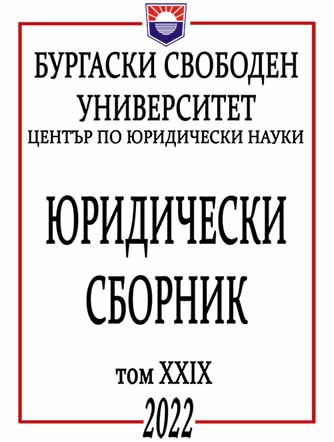PARTICIPATORY BUDGET IN POLAND AS A SMART CITY 3.0 TOOL IMPROVING THE QUALITY OF LIFE AND SAFETY OF RESIDENTS
PARTICIPATORY BUDGET IN POLAND AS A SMART CITY 3.0 TOOL IMPROVING THE QUALITY OF LIFE AND SAFETY OF RESIDENTS
Author(s): Barbara WęglarzSubject(s): Social Sciences, Sociology, Economic development, Globalization
Published by: Бургаски свободен университет
Keywords: participatory budget; poland; smart city; quality of life; safety
Summary/Abstract: Rapidly progressing urbanisation is, among other things, the reason why the world's urban population has exceeded 3 billion and is constantly growing. At the beginning of the 19th century, less than 30 million people (2.5% of the world’s total population) were living in cities globally, but over the next 100 years this number increased to 2 billion.1 Around 1960, the number of city dwellers constituted nearly 25% of the Earth’s entire population, in 1990 it was already 40%, and in 2006 more than 50% of the mankind were living in cities.2 According to the World Health Organization, by 2050, the world's population will double, and 70% of the entire population will live in the cities [who, 2013]3. It was estimated that about 60 million people grow in these centres every year, and their share in global GDP is systematically increasing and currently amounts to about 80% [OECD, 2012]4. The direct cause of intensifying urbanisation processes was industrialisation, whose consequences in the form of rapid population growth were visible at the turn of the 20th and 21st centuries first in the European countries, and then in North America and other continents of our globe. On the other hand, the consequences of urbanization most often include uncontrolled urban development, a decrease in the quality of life and in the safety of the residents, deterioration in the quality of the environment and rapid consumption of resources, or an increase in demand for utilities (water, gas, electricity) and transport services5. In order to tackle these challenges, cities are looking for the best solutions. These include the idea of a „smart city” (SC), which is based on the use of advanced technologies to improve the quality of life and safety of residents, as well as environmental protection.
Journal: Юридически сборник
- Issue Year: XXIX/2022
- Issue No: 1
- Page Range: 89-98
- Page Count: 10
- Language: English

